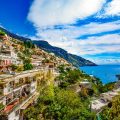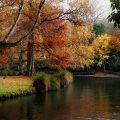When it comes to fishing in New Zealand, you’re spoiled for choice, so we’ve made it easy for you and pulled together everything you need to know to nail down the perfect itinerary.
From where to fish, what to wear when you’re fishing and what else to do besides fishing – read on to learn all you need to know to plan the ideal fishing trip in Aotearoa.
First off, where should you go?
There are so many options so we’ve narrowed it down for you, between the North and South islands. The North Island is typically warmer whilst the South is known for more extreme weather.
South Island:
Nelson
One of the sunniest and most beautiful spots for fishing is Nelson, on the South Island of New Zealand. The river Rai and Motueka are particularly good for trout. The water is rich in minerals and pure (‘gin clear’ if you talk like the locals).
Ahuriri River
Ahuriri River is another South Island river. A beautiful landscape awaits, as does some great angling. Much of the Ahuriri River is in a conservation zone, where you’ll find excellent fishing for both brown and rainbow trout.
North Island:
Bay Of Islands
Hit up the Bay of Islands if you’re into big game fishing or if you’re looking to catch some of your own seafood. The Bay of Islands – a sub-tropical micro-region rich in Maori culture – is a must, especially if you love crayfish. Located just off the north east coast of the North Island, these beautiful islands have some of the best crayfish fishing in the world.
Chatham Islands
Highlights of the Chatham Islands include its ancient Moriori tree carvings, Te Whanga Lagoon, bushwalking, plentiful seafood and hiking tracks. Yet, for many visitors like yourself, the main reason for visiting the Chatham Islands is its unique flora, fauna and wildlife.
What to Wear:
All sports come with ideal clothing that help to streamline the process and fishing is no different. The sheer abundance of volcanic lakes, icy rivers and pristine shoreline make it almost impossible to have a bad day fishing in New Zealand. But they also mean you need to be appropriately kitted up with oilskins to lightweight fishing jackets, depending on your location.
Here’s our top clothing tips for ensuring it’s the fish that get caught out, not you.
Weight matters – the weight of your gear plays a huge part in your comfort, but also your ability to get about. Go for something too light and you’ll be feeling that biting NZ winter. Go for something too heavy and you’ll be carrying unnecessary weight around and feeling too hot. Here’s a rundown of optimum weights for your wet weather gear while you’re in NZ.
Heavy Weight Wet Weather Gear:
High quality wet weather gear should fit to, and move with, your body. The weight should be distributed across your shoulders, never feeling like it’s dragging you down, even when wet.
For abrasive, dangerous and harshly cold environments like big game fishing during winter, go for heavy weight wet weather gear.
Consider how many layers you want to place underneath your gear. Anything less than 500gsm weight PVC is unlikely to hold up in the long run, but if you’re heading out to NZ for a trip, you should be fine. For these scenarios try something like this: Crew 654 Foul Weather Heavy Duty Bib & Brace Pants.
Medium Weight Wet Weather Gear
The heavier the gear, the more material required to produce it. This is reflected in the price. So medium weight wet weather gear is often a very cost effective option. If you need durable wet weather gear, but don’t want to wear two layers of PVC medium weight wet weather gear is typically 400 to 500 gsm PVC. We recommend something like this from Stormline: Stormtex 669 bib and brace.
Light Weight Wet Weather Gear
Lightweight weather gear is ideal if you know the weather is on your side. Light weight wet weather gear is also ideal for tramping. It gives you good protection against the elements without the burden of weight to carry around all day. A spot of summer angling down on the River Rai would be spoiled if you’re wearing a heavy PVC number, but a lightweight, easy-to-wear waterproof jacket is ideal for keeping you dry and cool.
Good quality lightweight gear often has some polyurethane to give it a supple and comfortable feel. For example, Stormline has designed two types of waterproof bib and brace sets; the high back 652 and the low back 664 which are ideal for this type of environment.
Finding the right fit:
In terms of fit, comfort and mobility are the key considerations. But the climate you’ll be working in will also be an influence. You should be looking for a garment that is reassuringly robust, without giving the feeling that it’ll start to become heavy.
If you anticipate needing to layer up under your wet weather gear, for example if you’re going sea fishing off the NZ coast in the months of June, July and August, you’ll want the option to add a warm layer under your gear, so choose a size that is generous.
Layering aside, good quality wet weather gear should be effortless to wear, regardless of weight.
If you try on a piece of wet weather gear that feels oppressive, return it. Try and achieve a range of movement while wearing the gear. If it’s for a leisure fishing trip, mimic the movement of casting a line. Do whatever it takes to give you a sense of how this piece of gear will function and move in ‘the wild’, don’t rely on how it feels as you’re wearing it in front of the mirror.
If you can’t do this in your gear, you’ve got problems.
Getting comfortable:
You need to be able to move freely, you need to be agile; imagine you want to take photographs of the seals basking off Milford Sound. You may need to get down on your knees for that perfect angle. So of course, knee pads will be extremely useful. Without them, you’ll have sore knees after a few snaps.
Similarly, if you’re going to be out at sea for a long stretch, hopefully you’ll be pulling something heavy aboard your boat. So a padded front with a comfortable back will serve you best.
Before making any purchasing decisions, consider the function of the gear and how comfortable it is to wear and move around in.
Life can (sometimes) be about more than just fishing:
If you’re into the outdoors there’s a veritable feast of additional activities that you could try your hand at between spots of fishing, here are some suggestions to wet your whistle.
Great Barrier Island
You’ve heard of the Great Barrier Reef but you may not have heard of Great Barrier Island.
Did you know that NZ is actually more than just two islands? Known locally as just ‘the barrier’, this is the fourth largest of them. It’s located approximately 90 km south of Auckland and is home to some of the world’s most stunning – and isolated – beaches. In fact, this place is so isolated that it’s not connected to New Zealand’s national electricity grid.
As well as chilling out on the beach, you can surf, hike or explore the lagoons. Just make sure you’ve packed the right gear for the season.
Getting there is relatively simple, even given its remote nature. You can hop on a ferry or make the 30 minute flight.
Milford Sound
The word ‘amazing’ is grossly overused, which is a shame as it robs us of an ample adjective to describe Milford Sound. Rudyard Kipling called it the “eighth wonder of the world” and he was probably correct. Not much matches Milford Sound for stunning beauty.
It’s located within the Fiordland National Park, on the south west side coast of the South Island. Milford sound is actually not too far from Invercargill, home of Stormline wet weather gear, which is where we’ve recommended you buy your gear from as they know their stuff.
There’s plenty to get up to at Milford Sound, from watching whales, seals, puffins and other marine life to walking among the incredible waterfalls. There’s even a rainforest, sheer rock faces more than a kilometre tall and an underwater observatory.
Rotorua geothermal zone
Within easy striking distance of Auckland, Rotorua is NZ’s most visited geothermal area, and a major destination for both domestic and international tourists; the tourism industry is by far the largest industry in the district. Rotorua offers hot springs, mud baths, geysers and a host of Maori cultural attractions as well as walks and some pretty fun night life and nice restaurants.
Franz Josef Glacier
This is one of the fastest growing glaciers in the world, it runs from the Southern Alps to a rain forest. No other glacier on earth can give you that range of ecological variety. It’s currently 12 km long and getting longer every year. Depending on how you measure it – annual growth vs daily growth – this bad boy can achieve 70 cm growth in a day!
But again, as with Milford Sound, remember to take some decent wet weather gear. It can get rainy, hot, windy and cool all in a single afternoon.
Getting around NZ:
Assuming you’re already based in New Zealand, or you’ve managed to get yourself here by plane – you’ll just need to know how to get to all the magical places we’ve mentioned above. If you don’t own a car, then car hire is generally going to be the easiest way for you to get around. For getting between the north and south islands there are two options – you can either catch one of the many car ferries between Wellington (North Island) and Picton (South Island) or search for a domestic flight to get you from and to most main NZ cities then grab a hire car from the airport.
The Bay of Islands and Rotorua are a little easier to get to (depending on where you are based of course) with both being approximately a 3 hour drive from Auckland – with the Bay of Islands being north, and Rotorua being south. There are a plethora of sightseeing opportunities along the way so be sure to plan these stops in as part of your trip.
So there you have it, a comprehensive list of all the important things to consider when planning your next New Zealand fishing trip. We hope you enjoy your time away and catch some big ones!











